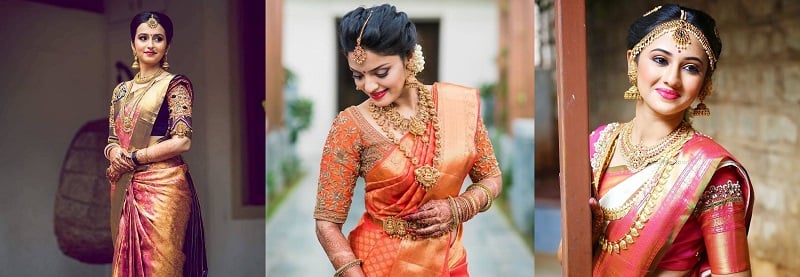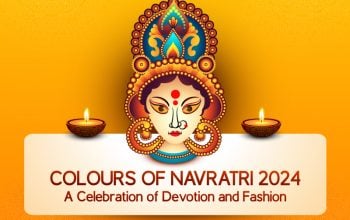Saree is the perfect outfit for a bride, bridesmaid, or anyone who’s got to attend a function or a party. This particular Indian wear has a charm and beauty of its own that none other outfits can match. The best part about a saree is that it is available in various fabric and design options. So much so that almost every Indian state has its unique saree. For instance, we have the Kanjeevaram saree from Tamil Nadu, Banarasi saree from Varanasi, Chanderi saree from Madhya Pradesh, Leheriya saree from Rajasthan, Phulkari saree from Punjab, Chikankari saree from Lucknow, Sambalpuri from Odisha, and the list goes on.
Talking about South Indian saree, we can surely say they have a big role in popularising saree worldwide. The sarees from southern states of India look exquisite and have a charm of their own. They can make any woman look and feel like a princess in minutes. Though their popularity has no borders, they hold a special place in a South Indian bride trousseau. If your saree collection is missing a South Indian saree, we’ll suggest you invest in one soon. They are the go-to attire for anyone who wants to look classy with minimal effort.
Now, before we move on to different ways to drape a South Indian saree, let’s first check out the variety of South Indian sarees we have at our disposal – one of the many ways to take pride in our country’s diversity.
Here’s all the different South Indian Saree you can add to your current collection –
Kanjivaram silk saree
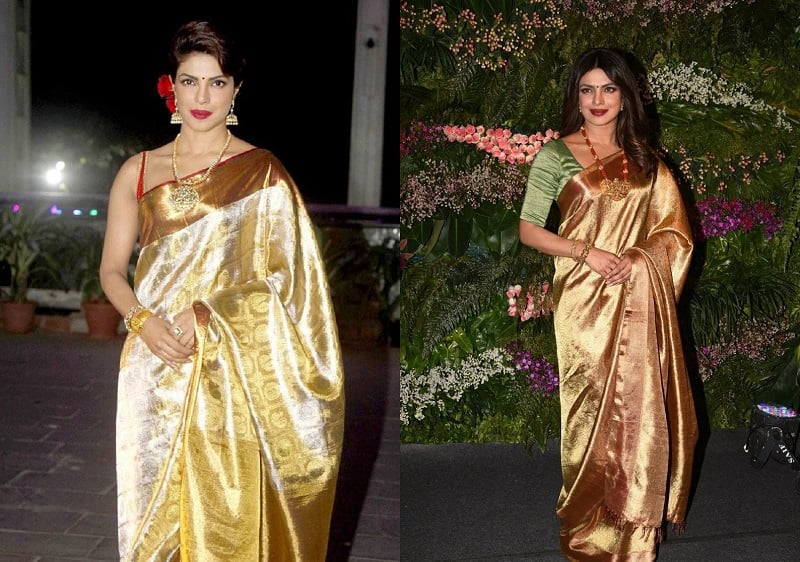
One of the most loved and recognised silk saree of all is the Kanjivaram saree. This traditional South Indian Saree features a gold zardosi border that makes it look super elegant and exquisite. Usually available in bright hues of red, yellow, orange, and gold, they make for a perfect bridal outfit.
Celebrities like Deepika Padukon, Rekha Ji, Aishwarya Rai wore it and looked mesmerising, to say the least.
Mysore silk saree

Backed by the royalty of Mysore, this saree is known for its fine, lustrous fabric. A Mysore silk saree is super easy to carry, thanks to its lightweight nature, and is perfect summer wear. Available in mostly solid colors with contrasting borders, they make for a perfect classy saree.
Konrad silk saree
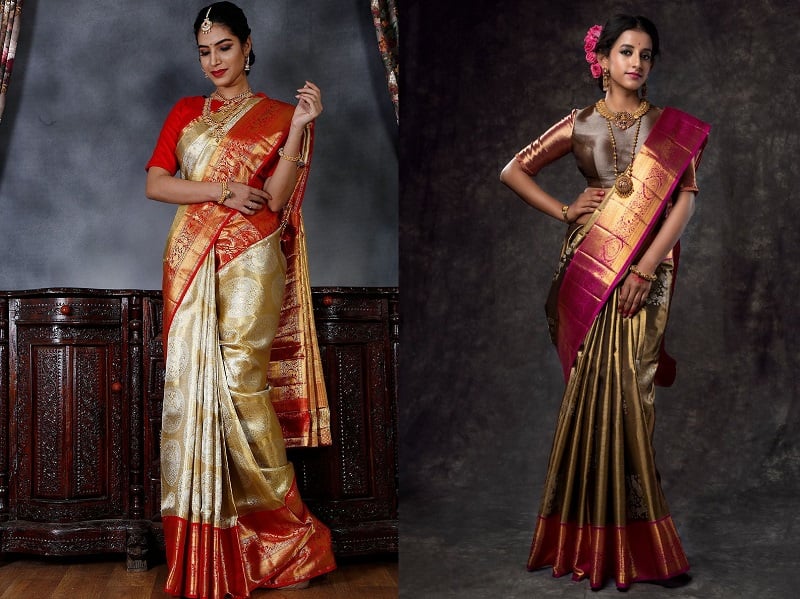
Originated in Tamil Nadu, Konrad sarees are also known as temple sarees as they were originally woven for temple deities. They feature intricate work and are known for their motifs that usually feature natural elements, like beautiful flowers, peacock, vines, double-headed eagles, and elephants.
Chettinad silk saree

Born in the Chettinad district of Tamil Nadu, this cotton saree showcases the region’s rich tradition. They are easily distinguishable with their bold checks, strips, and contrasting tones.
Gadwal silk saree
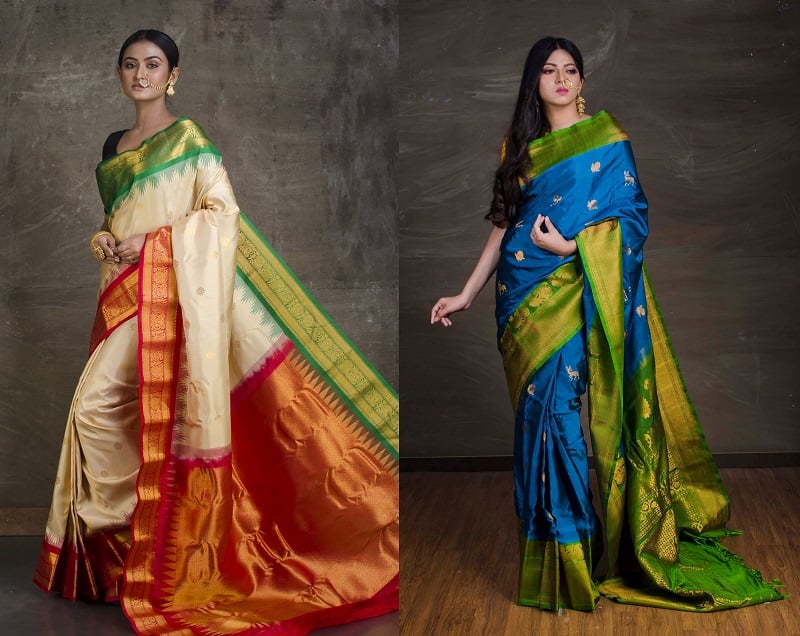
Coming from Andhra Pradesh, this saree is made by hands-only with its creation process passed on through generations.
Pochampally silk saree
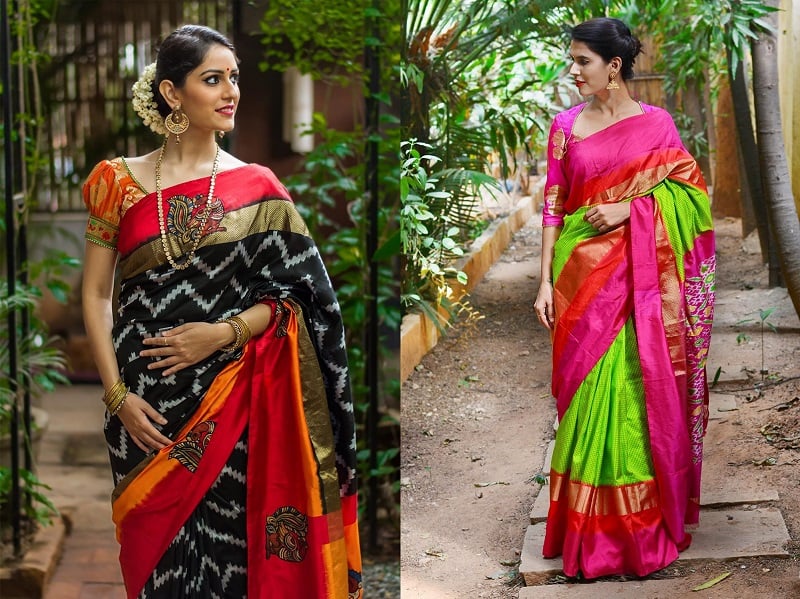
This one here comes from Telangana and is offered in either silk, cotton, or even a mix of both the fabric. Pochampally sarees are known for their intricate geometric patterns made using Ikat style dye.
Some other types of South Indian sarees are Dharamavaram, Crepe, and Kavasu.
Now that we are clear on South Indian Sarees’ types, let’s discuss the different draping styles. To exploit a sarees full potential, you must drape it well and in a style that suits you the best.
Here are a few saree draping styles you can opt for when wearing a South Indian Saree –
1. Belt style saree drape
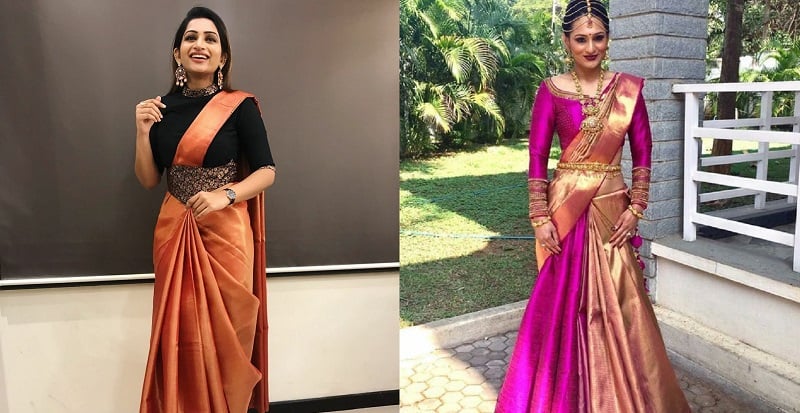
A saree drape with a belt will keep you on top of your fashion game. It’s even a great look for a bride on the D-day as it will keep the heavy Kanjivaram in place with all the crisp creases intact for hours. As for its origin, it is heavily inspired by the waist chain, aka kamarbandh women used to wear in the old days. In its modern avatar, the waistbands for sarees are available in a wide range of material, work, colours, etc. You can even go all old-school by opting for a heavy, intricate broad waist belt, preferably in gold for that awe-striking bridal look.
2. Lehenga style saree drape
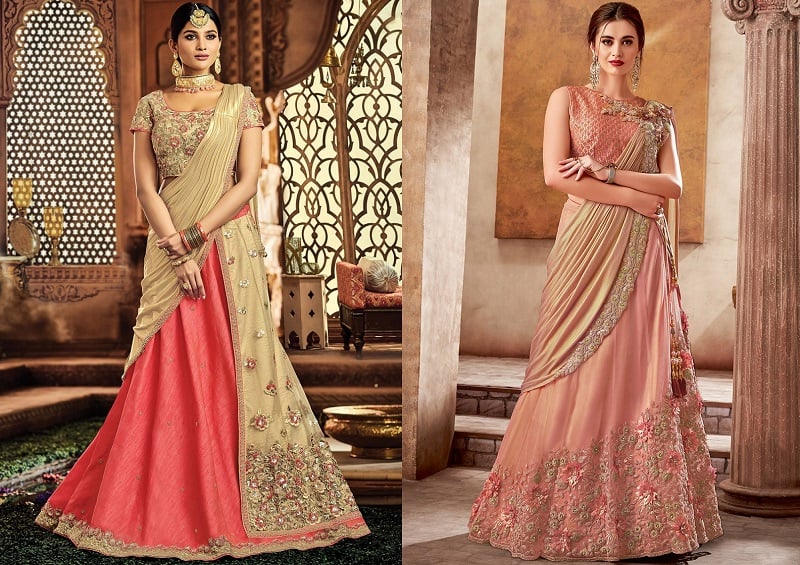
We all know what’s a lehenga; though it’s a North Indian wedding staple, its popularity and recognition have no boundaries. With designers and clients experimenting and looking for a unique look, the lehenga style drape for a South Indian creates the perfect full-glam look. You will find several videos online guiding you to wear your saree in lehenga style; however, we’d like to give you a few pointers.
- Like when going for a lehenga style saree drape, always wear a high-quality satin or shimmer underskirt
- Make sure that the underskirt fabric is thick, as it will make the pleats appear heavier
- Add on a kamar bandh to beautify the look
- Ensure all the pleats are of the same width and equidistant
3. Dhoti style saree drape
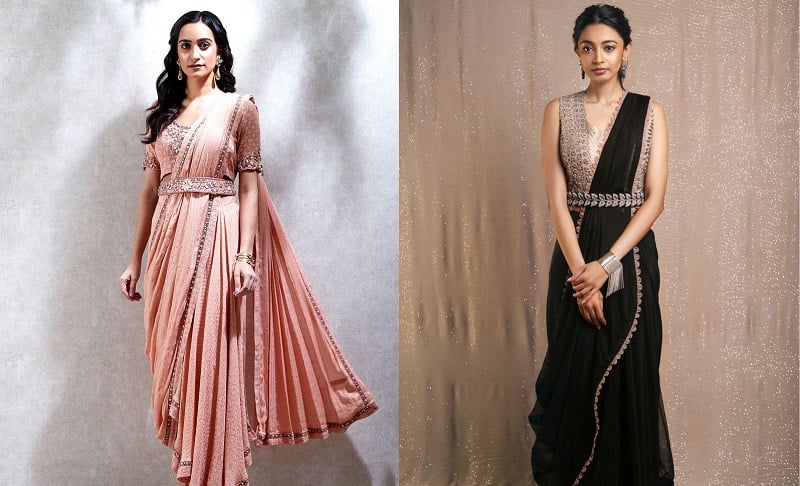
Give a fun, quirky twist to your elegant South Indian Saree by going for a dhoti style saree drape. It is super easy to carry and move around, thus saving all the tension of handling the saree amidst the celebration. Here are a few tips that’ll come in handy when opting for a dhoti style saree drape –
- Go for a solid colour saree with a contrasting narrow border. It will enhance the fold lines that are essential to the style
- Avoid printed saree, as it will camouflage the dhoti drape
- Opt for strong and sturdy safety pins
- A tall and slender pair of heels will complement the look
4. Gujarati style saree drape
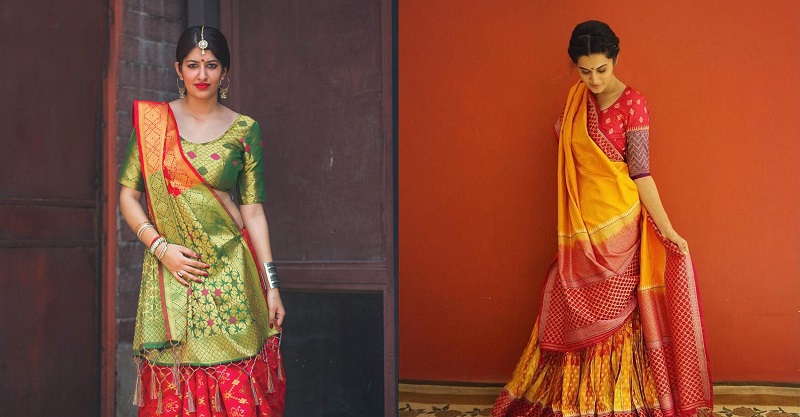
The Gujarati style saree drape is very common in North India; thanks to the daily soaps, it has become popular. Here the pallu goes over the right shoulder, showing -off all the beautiful and intricate work. If you have a blouse with a heavy-embroidery or embellishments, then this drape is perfect for highlighting the detailing. Apart from going very well with a Kanjivaram saree, this draping style will look great on a Bandhani saree, Banarasi saree, and Lehariya saree.
5. Pant style saree drape

We have saved the most unconventional and most daring (in a sense) of the lot for the last. As the name suggests, this one has a pant (replacing the underskirt), and a saree, blouse, of course, is essential. This drape style is not only easy to wear but is equally functional and comfortable. You can create a superb look by investing a little time and money in the pants; we’d suggest sync the blouse and pant colour and work. When put together, it’ll make for an amazing outfit for a cocktail or Mehendi ceremony. Few tips –
- Try opting for a contrasting saree and blouse-pant duo
- Pick a saree in bold colour with a heavy border, as a full work saree will overshadow the look
Designer’s note
We won’t be wrong in saying that the ball is in your court with a well-draped saree. No matter which draping style you choose, safety pins will be essential, so choose them wisely, pick the one in size that doesn’t peek or protrude through the fabric.
We hope the article comes in handy and helps you attain that beautiful, one-of-a-kind look you always wanted in that South Indian Saree of yours.

